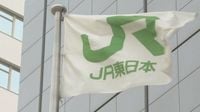On May 8, 2025, commuters in Japan faced significant disruptions as the JR Takasaki Line and the Shonan-Shinjuku Line adjusted their operations due to a breakdown of a freight train and necessary vehicle inspections.
The JR Takasaki Line, which connects Tokyo Station to Takasaki Station in Gunma Prefecture, halted services in both directions. This decision was made to conduct vehicle inspections, ensuring the safety and reliability of the trains. The disruptions affected a considerable number of passengers, particularly those traveling between Tokyo and the northern regions of Gunma.
In addition to the Takasaki Line, the Shonan-Shinjuku Line also experienced service adjustments. Trains operating north of Shinjuku Station were impacted, causing further inconvenience for commuters relying on this route to reach their destinations. The overlapping nature of these two lines exacerbated the situation, leading to longer wait times and crowded platforms.
According to reports, the breakdown occurred between Konosu and Kumagaya Stations, which added to the operational challenges faced by the railway companies. Passengers were advised to seek alternative routes or allow for extra travel time as the situation unfolded.
Railway authorities have emphasized the importance of safety in their operations, stating that the inspections were necessary to maintain the high standards expected by passengers. "We are committed to ensuring the safety of our trains and passengers," an official said, highlighting the proactive measures taken in response to the breakdown.
The impact of such disruptions is felt not only by daily commuters but also by businesses and services that rely on the punctuality of train services. Many passengers expressed their frustration on social media, sharing their experiences and seeking updates on the status of the trains.
In light of these events, railway companies are working diligently to resolve the issues as quickly as possible. They have promised to keep passengers informed through announcements and updates on their official websites and social media channels. The hope is to restore normal operations by the end of the day, minimizing the inconvenience caused.
As the situation develops, passengers are encouraged to check for real-time updates on train schedules and service availability. The disruptions serve as a reminder of the complexities involved in managing a large-scale public transportation system, particularly in a densely populated area like Tokyo.
In conclusion, while the breakdown and inspections have led to significant operational challenges today, the ongoing commitment to safety and transparency from railway authorities aims to reassure passengers during this time of disruption.






